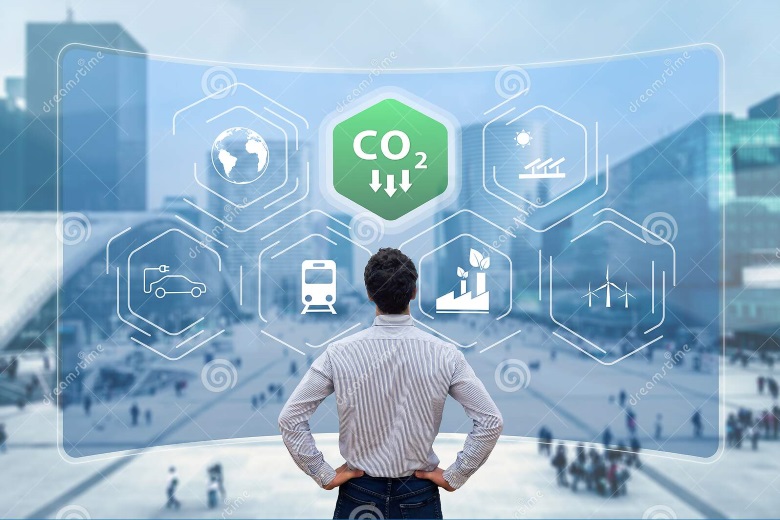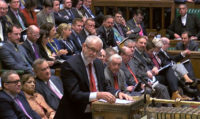Businesses globally are looking to reduce their carbon footprints.
Marketplace trust will be built by robust carbon accounting, genuine action and genuine reporting. As the environmental element of an Environmental Social Governance, carbon dioxide quantification and reporting must be completed to a recognized standard and methodology. This can follow the Carbon Disclsure Project model (CDP) and calculated in accordance with The Greenhouse Gas Protocol or an international ISO standard such as BS EN ISO 14064 part 1. This ISO standard has a verification element published as part 3 of the standard, making it particularly suitable to a CDP model of carbon measurement and the basis of a carbon reduction plan.
Compliance with this standard requires measurement, quantification and reporting of the three scopes of greenhouse gas inventories. Scopes 1 and 2 largely comprise direct and indirect energy use through business operations, travel, heating and lighting. These are the most commonly reported scopes. Scope 3, despite being often the largest of the scopes is less frequently reported.
What Are Scope 3 Emissions?
It’s sometimes misunderstood that a company’s scope 3 greenhouse gas emissions are the scope 1 and 2 emissions of their suppliers. This would merely be the carbon equivalent of fuel and energy use and could be considered to represent a double counting of carbon emissions. Sometimes, this reasoning is used to justify not measuring or reporting an organization’s scope 3 emissions. It has been stated by some, that if all companies report their scopes 1 and 2 there would be no need for these “other indirect emissions” that make up scope 3 to be reported. However, there are 15 different emission sources included in scope 3, as defined by the greenhouse gas protocol corporate reporting standard. They can be the largest part by far of an organization’s carbon footprint, and not all of them can justly be laid at the foot of the supply chain.
Stepping back; scope 1 emissions are direct emissions from sources such as stationary combustion such as furnaces, ovens and central heating plus direct mobile combustion such as in company-owned vehicles like company cars or delivery vans. Scope 2 emissions are indirect emissions from purchased energy sources, most commonly this is electricity bought in to operate the business lights, IT, and machinery.
Although scope 3 will include the scope 1 and 2 emissions of suppliers, it also includes items that are very much the emissions of the reporting organization. While some scope 3 emission sources can be a little harder to collate data for, the size of their contribution to an organization’s greenhouse gas emissions in total means that environmental responsibility demands sufficient commitment to their measurement and so the visibility that lends allowing for reduction opportunities from them. Let’s examine these scope 3 emission sources and consider if there is a legitimate reason for their omission:
First, emissions from business travel: If an employee travels to a business meeting on behalf of the company, in their own car and then re-claims that in expenses, these are scope 3 emissions. Organizations have the opportunity to reduce these emissions through actions such as incentivizing more remote meetings, encouraging greener travel through bicycle purchase schemes, rail travel season ticket loans, and incentives for employees to buy electric cars as their private car.
Second, Transmission and distribution emissions resulting from the purchase of electricity: While the electricity bought in is part of scope 2, the transmission and distribution losses belong in scope 3. Not reporting scope 3 emissions means that this element of electricity used in the running of the business is not reported.
Third, Water use and treatment: There are plenty of good options allowing the reduction of supplied water use. These include harvesting of rainwater, water re-use in a grey water system, maintenance and prevention of leaks and losses and fitting water reduction gadgets to hand washing basins and toilet cisterns. Reducing the quantity of water supplied saves money, conserves an essential resource, reduces the quantity of wastewater to be treated, reduces your greenhouse gas emissions - and belongs in scope 3.
Fourth, waste disposal: How a company disposes of their waste materials is included in scope 3 — The organization can choose to dispose of refuse by landfill, or by separating out their waste for recycling. They can play an active part in reducing waste materials so that the amount disposed of is less. These are all part of business practices in business strategies that all decisions made by the reporting organization.
Fifth, investments: Money is a powerful enabler. An organization has the opportunity to select investments that are environmentally responsible. They might invest in green bonds or they might choose to invest without taking into account the profile of their investments. This choice is still within the organization’s power and can be one of the greatest tools in the fight against climate change. Move the money, move the power. Investments are part of your scope 3 emissions.
Finally, freight and transport: When transporting out goods or mail packages, an organization can select how those items are sent. We can select the type of transport with the lowest carbon emissions for the purpose. Larger cargo ships have a smaller carbon footprint per ton of goods conveyed, and transport by train has a lower carbon footprint than transport by a heavy goods vehicle such as a truck with three or more axles. Changes can be made to ensure optimal use of freight loads, and how they are packed can consider reusability of the packaging materials or structures themselves.
All in all, the organizations that contractors and engineers build projects for have control over, and choices in, a very large element of the scope 3 emissions. As such it is not acceptable to plead that scope 3 is out of their control and is effectively in the gift of their supply chain.
Moreover, a corporation that is committed to environmental responsibility has the opportunity to work with their wider value chain to facilitate visibility and understanding of the scope 3 emissions that do include their suppliers’ emissions. A larger organization can empower their supply chain. There can be either a carrot or a stick approach to this. They can work with their supply chain collaboratively providing support, information or active technical support to suppliers in developing their greenhouse gas inventories and carbon reduction plans. Alternatively, a stick approach could be taken by requiring suppliers to have a carbon reduction plan in order to be included as suppliers, or preferred suppliers.
Ultimately, all construction stakeholders are in this together. We only have the one planet and all will be adversely affected by climate change. It makes both business and moral sense to be on the side of your suppliers, and to provide them with a collaborative framework through which we can all collectively arrive at a low-carbon economy.
Dr. Torill Bigg is a chartered member of the Institution of Chemical Engineers and Chief Carbon Reduction Engineer, Tunley Engineering. She leads Tunley's carbon reduction team and is passionate about environmental protection and decarbonization. With a professional background in engineering design, innovation, operational and asset management, and an academic background in biochemistry, chemical engineering, business management, Torill continues to apply creative problem solving and leadership skills to her role.





Post a comment to this article
Report Abusive Comment